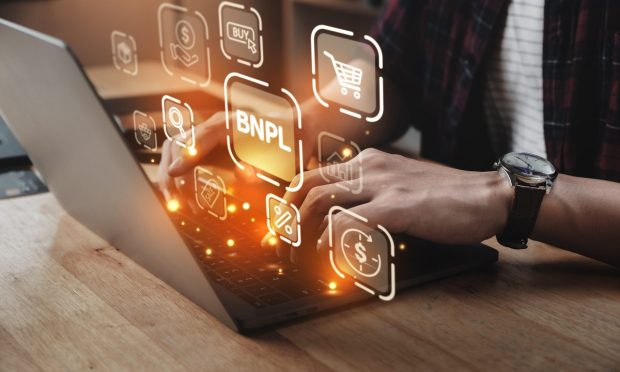Today in Retail: Online Shoppers Prioritize Using Preferred Payment Methods

Today in retail, Ulta Beauty benefits from shoppers’ desire to emerge from COVID-19 pandemic lockdowns, while Costco keeps its low-price differentiator in place as inflation continues to rise. Plus, Big Lots points to inflation as the cause of its lackluster sales.
Meet the 3 Personas Who Prefer Tailored Online Shopping Experiences
Personalization is one superpower of online commerce, but what passed for personalized eCommerce in 2020 and 2021 is evolving into “tailored shopping” that goes beyond basic algorithmic suggestions to deliver the richer online experiences that keep customers coming back.
This is found in data from The Tailored Shopping Experience: Meeting Consumer’s Online Expectations, a collaboration with Elastic Path, based on a survey of nearly 2,100 U.S. consumers, which showed that 67% of consumers are familiar with tailored experiences and are willing to switch merchants to access it.
PYMNTS define tailored online shopping as using known information about customers to help merchants create customer-centric experiences and a unique feel for online stores with precise product recommendations, better product matching and uncomplicated rewards.
Ability to Use Preferred Payment Method Is a Top ‘Want’ of Online Shoppers
When shopping with online grocers and online retailers, consumers consider different shopping features to be most important, but a large share say the ability to use their preferred payment method is something they want.
That ability is ranked No. 1 or No. 2 among the “wants” of those shoppers, according to “Satisfaction In The Age Of eCommerce,” a PYMNTS and Riskified collaboration based on a survey of 2,153 U.S. consumers.
Consumers getting their groceries online consider curbside pickup to be the most important shopping feature, followed by an online experience that is easy and works all the time, and same-day delivery. Those online features were cited as most important by 25%, 18% and 14% of consumers respectively.
10% of Millennials Use BNPL Every Month
A PYMNTS survey of 2,500 respondents and across a broad range of demographics show that the greenfield opportunity for paying in installments, online and in-store, is a significant one.
The payment methods that one might deem to be more “traditional” still hold sway, and by a lot, according to our continuing explorations of digital payments. For in-store purchases alone, debit and cash still dominate, and that may make sense given the fact that consumers want to spend the funds that they know they have on hand. BNPL only accounts for about 3.7% of transactions.
But for in-store commerce, depending on where you look, and especially among younger consumers, BNPL usage is higher than the overall sample’s average. As many as 6.2% of millennials and a bit more than 5% of bridge millennials have used BNPL to get what they need in brick-and-mortar settings. That percentage trumps the 1.4% of baby boomers and seniors who do so.
AMZN vs WMT Weekly: An Unforgettable Month for All the Wrong Reasons
With shares of Amazon and Walmart both slumping over 20% in the past 30 days in the wake of their respective earnings reports, the so-called “merry, merry month of May” has been no walk in the park for the top two retail titans, as well as most of their peers.
While there is little doubt that Walmart and Amazon will emerge intact on the other side of this latest phase of economic upheaval, the same cannot be said for their small rivals on Main Street or the 60% of U.S. households that are currently living paycheck to paycheck, while tapping their dwindling savings and available credit in order to make ends meet.
For the latter, it is truly a contest of determination and the ability of individuals to find a way to survive until the storm passes, so to speak. Until it does, and by some estimates inflation could be uncomfortably high for the rest of the year, attributes like value, convenience, loyalty rewards and other personalized retail responses will be at a premium and reap rewards for the companies that are most innovative at creating them.
American Eagle Expects Long-Term Headwinds
American Eagle Outfitters isn’t celebrating the success of its first-quarter earnings for long. Instead, the company is looking ahead to the second quarter of the fiscal year — the three months ending July 31 — and bracing for the impact of expected inventory backlogs, higher freight costs and supply chain snags.
American Eagle’s total net revenue increased 2% to $1.055 billion year over year. Aerie revenue grew 8% to $322 million in the three months ending April 30 and American Eagle revenue fell 6% to $686 million from the same time in 2021. AE’s consolidated store revenue increased 2%, while its total digital revenue declined 6%. Store revenue was up 1% from the first quarter of 2019, while digital revenue grew 48% in that time.
Ulta Beauty Boosts Customers Experiences, Shuffles Stores
Ulta Beauty is seeing the benefits of people emerging from lockdown life, with increases across the board in the first quarter of fiscal 2022. The beauty brand reported net sales of $2.3 billion for the three months ending April 30, up 21% from the same time in 2021, while comparable sales increased 18% year over year. The company raised its outlook for fiscal 2022 after a strong first quarter.
Ulta opened 10 new stores in the first quarter of fiscal 2022 and relocated six others. At the end of April, the company had 1,318 stores totaling 13.9 million square feet. Buoyed by its first-quarter performance, Ulta boosted its outlook for fiscal 2022, including raising its net sales projection from $9.05 billion to $9.35 billion.
Google Could Join Indian eCommerce Network ONDC
Google is in discussions with the government of India to integrate its shopping services with ONDC, the country’s new eCommerce network, as Reuters reported Friday (May 27).
India debuted the Open Network for Digital Commerce in April in a bid to compete with massive American companies Amazon and Walmart for the country’s eCommerce market, expected to balloon from $55 billion to $350 billion by the end of the decade.
ONDC Chief Executive T. Koshy told Reuters that Google was one of many companies it was in talks with about the project. The ONDC platform allows buyers and sellers to connect and transact with one another online no matter which they use. It focuses on apps in local languages and places an emphasis on small merchants and customers in rural areas.
Big Lots Blames Inflation for Slow Q1 Sales
Discount retailer Big Lots released its quarterly earnings Friday (May 27), showing a rise in eCommerce use but a decrease in sales as consumers wrestled with inflation and fuel prices.
According to a news release from the Columbus, Ohio-based chain, the company’s net sales for the first quarter of fiscal 2022 fell 15.4% from the same period in 2021 to $1.37 billion.
CEO Bruce Thorn said the company expects the landscape to remain “challenging,” with Big Lots focused on “aggressively right-sizing our inventories over the course of Q2.” He said that eCommerce remains a “standout” for the company, now accounting for more than 7% of its sales, with same-day deliveries increasing 20% over last year. In Big Lots’ last quarterly report, eCommerce penetration was at 5%.
Gap Faces Economic Headwinds in Q1
The ongoing supply chain hangups, increased inflation and remnants of the COVID-19 pandemic conspired to lead apparel retailer Gap Inc. — parent company of Old Navy, Banana Republic and Athleta — to fall short of its first-quarter earnings targets for the three months ending April 30.
The company is moving forward with its plan to open about 30 to 40 stores each for Old Navy and Athleta in fiscal year 2022. It also shared its 350-store closure plan that will shutter about 50 Gap and Banana Republic stores in North America during the year.
Gap saw its Q1 net sales drop 13% year-over-year to $3.5 billion, a function of a string of store closures across the brands and a lack of economic stimulus money in the mix this year. Comparable sales were down 14% year-over-year in Q1, while online sales fell 17% and store sales dipped 10% from 2021 levels. The company ended the quarter with 3,414 store locations in more than 40 nations, of which 2,825 were company-run.
From Membership Fees to $1.50 Hot Dog Combo, Costco Holds Firm on Low Prices
With inflation the highest it’s been in the company’s nearly 50-year history, Costco’s mission of providing “the best possible prices on quality brand-name merchandise” is being tested and is arguably more important than ever to the 65 million households that pay an up-front fee for the value they receive from shopping and fueling up at the world’s largest warehouse club.
For a quarter that was dominated by 8% inflation and record-high gasoline prices, Costco said its earnings for the period ending May 8 were underpinned by a 6% increase in memberships and shopping frequency and an average domestic transaction size that was up over 10%.
Some of the best performing categories in Q3 were candy, tires, toys, jewelry, apparel, bakery and deli, which were offset by weakness in liquor, office, sporting goods and hardware, all of which were quite strong a year ago due to a surge in home-office and home-gym building.
